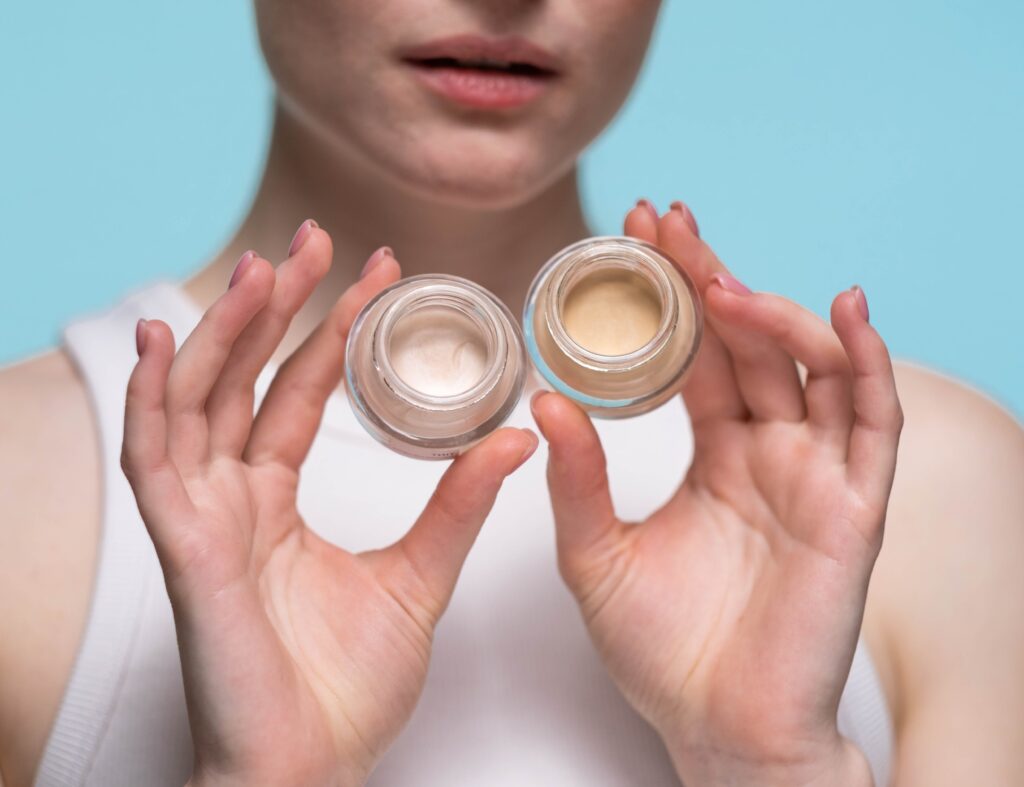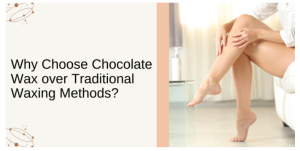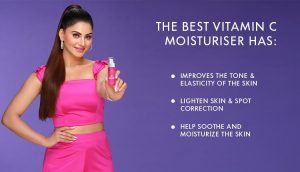
Introduction
Cosmetic products are substances that help improve, change or clean the skin, complexion, nails, teeth, or hair. Cosmetics comprise beauty preparations like perfume, make-up, nail polish, and skin cream, along with grooming aids such as shampoo, soap, deodorant, and shaving cream.
Some Promises That Cosmetic Products Make
- Anti-aging creams are mostly cosmeceutical moisturizer-based skincare products that promise to make the consumer appear younger by masking, preventing, or reducing all the signs of aging.
- Products claiming to possess therapeutic effects (for instance, treating or preventing diseases), or those containing a few types of active ingredients that are banned from being used in cosmetics are seen as drugs, something like topical antibiotic creams.
- Products that have natural active ingredients, also claiming to have therapeutic effects (for instance, topical herbal remedies to accelerate scar healing) are natural health products.
- Products that are eaten and have no therapeutic effect.

Historically, cosmetics never had to go through any regulations pertaining to their manufacture as well as use, while the lack of scientific knowledge about the effects of numerous compounds on the body resulted in several adverse, negative effects on cosmetic users. These effects included blindness, deformities, and sometimes even death. Various cosmetic products then available were either chemically unreliable or sourced from natural elements found mostly in kitchens, like berries, beetroot, and food coloring.
In the European Union, all cosmetic safety reviews are carried out as per certain regulations while in the United States, these products are regulated by the FDA (Food and Drug Administration). In Asia, it is the ASEAN Cosmetics Directive that implements the regulations. Cosmetic products are required to be labeled and then packaged depending on the warnings and listing of the International Nomenclature for Cosmetic Ingredients.
What are Anti-Aging Cosmetics Products?
With aging, the skin’s elastin and collagen break down, leading to it becoming looser and more vulnerable to wrinkling. Exposure to UV (ultraviolet) light is not the only reason, but a few lifestyle habits like drinking alcohol, and smoking also affect the collagen.
People using facial expressions repeatedly, such as frowning or squinting, are often prone to permanent wrinkles that appear either on the forehead or around the eyes. Anti-aging skin care items, like serums and moisturizers, are not exactly enough to completely stop aging. But, cosmetic products with a few active ingredients, like hyaluronic acid and retinol do curb the signs of aging while enhancing the appearance.
The American Academy of Dermatologists suggests that every adult should make use of a sunscreen and moisturizer every day, which are two crucial anti-aging products that facilitate skin protection from UV rays, keeping it supple and smooth. The AAD also suggests that those that follow a proper anti-aging routine allow them to look younger than they actually are.
However, people are also recommended to apply various other products popular for their anti-aging properties, like retinol, vitamin C, and hyaluronic acid. This can be due to the presence of moisturizing, brightening or anti-inflammatory properties.
Do Active Skin Care Ingredients Really Work?
Yes, they do! The majority of anti-aging skincare products available in the market today have a higher number of active ingredients than they used to before. However, it is imperative to know which ones should be purchased, and the wide variety of options can be overwhelming.
The most effective and popular ingredients usually present in various anti-aging cosmetic products are:
- Hyaluronic acid: this ingredient is a humectant, which binds moisture to the skin, plumping up its appearance.
- Retinoids or retinol: this ingredient helps foster the production level of elastin and collagen in the skin, bringing down the appearance of wrinkles and fine lines.
- Vitamin C or L-ascorbic acid: it helps brighten dull or tired-looking skin while protecting it from various environmental factors like free radicals, UV rays, and pollution.
- Copper peptide: an ingredient that helps bolster the production level of elastin and collagen, while serving as an antioxidant. It may be especially beneficial during menopause since collagen levels drop at that stage.
- Alpha-hydroxy acids or AHAs: known for brightening the skin and fostering the renewal rate of skin cells. AHA peels, or glycolic peels, deal with sun damage as well as hyperpigmentation, coupled with wrinkles and fine lines.
What are the Types of Anti-Aging Cosmetics Products?
Anti-Pigmentation
Anti-pigmentation cosmetic products have carious ingredients but they either slow down the pace at which pigment is developed by the pigment-generating cells (which are melanocytes) or prevent/slow down the movement of pigment to the surrounding skin cells (which are keratinocytes).
Anti-Wrinkle
Most anti-wrinkle cosmetic products rapidly bring down wrinkles as well as fine lines. These are mostly potions and serums that are gentle and lightweight on the skin. The best quality anti-wrinkle creams contain ingredients like green tea, Shea butter, B5, vitamin E jojoba oil, and axerophthol. In addition to dealing with wrinkles, anti-wrinkle products prevent skin drying, peeling, and flaking.
Younger Generation Grows Aware of Aging Signs
The soaring awareness regarding anti-aging cosmetic products for the skin and body among the younger generation is the latest trend. Younger people generally focus on maintaining their skin only when there is a rise in skin complications owing to alcohol consumption, unhealthy eating, pollution, etc. The surging efforts among many to appear healthier and younger should elevate the demand for a variety of anti-aging cosmetic products like gels, lotions, creams, etc.



